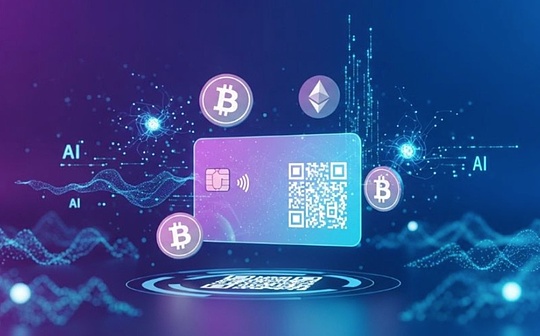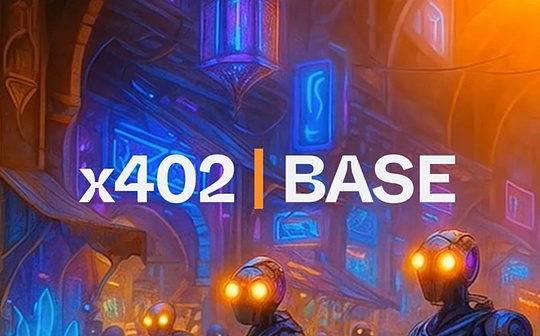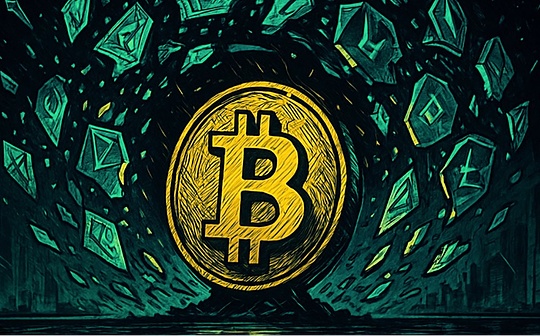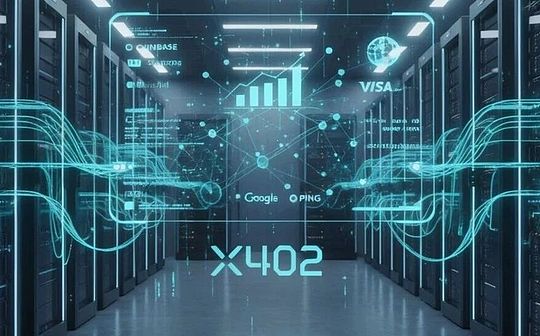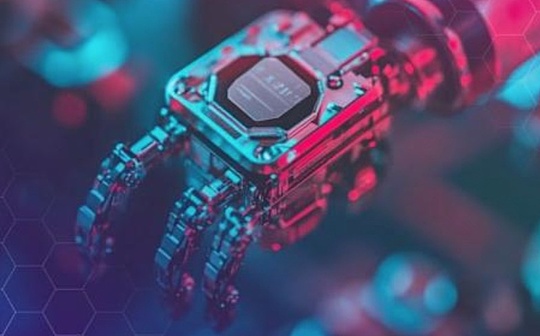
author:Charlie Liu
If you pay attention to the fintech, encryption or AI circles, you must have been hit by the word “x402”.
A number of Internet giants have withdrawn from the track of agentic payments: Coinbase and Cloudflare have joined forces to launch the x402 Open Foundation, Google has inserted encryption extensions into its AP2 standard, and even Adyen, who has always been calm, has rolled up his sleeves and quit.Visa’s TAP promises to achieve interconnection, and Stripe and OpenAI have joined forces to promote ACP and “instant checkout” as industry standards.
An almost forgotten Internet status code – 402 “Payment Required” has become the key to determining the business model of the next generation of AI agents.
In fact, within the payment circle, this undercurrent has been surging for more than half a year.
When I wrote the article “AI Agents: The Next Frontier Reshaping the Future of Payments” on Substack in February this year, I noticed that star multi-million dollar seed round projects like Skyfire and Payman – backed by Web2 and Web3 payment giants such as Visa and Coinbase – are already arranging startups in this field.
And companies like Stripe, Visa and Paypal have all mentioned the prospects of integrating AI agents and payments in their annual reports, although the space occupied is limited.
But in recent weeks, x402 has really emerged from the circle. Thanks to the big moves of AI giants and financial technology giants, x402 itself and the broader intelligent business trend have finally attracted the attention of the wider technology and investment circles.
Many comments mentioned that it originated from the HTTP 402 status code, and also analyzed how the rise of agent AI and the increasingly mainstream encryption technology have added fuel to this topic.
But they generally ignore a fundamental driving force:What is the real motivation behind this AI + crypto trend??
The starting point of everything is the existential crisis of AI companies
On the surface, everyone is talking about “intelligent agents can finally make payments on their own” and are imagining what new skills AI agents can unlock in the future.
But according to what I learned from a closed-door communication with a star investor in Silicon Valley, the source of all this, which is the real demand pain point, is actually the survival pressure from large model manufacturers such as OpenAI and Anthropic.
While they are telling the capital market a trillion-scale future story, they are watching copyright lawsuits pile up, and public doubts about the ethics of their training data are growing.If they cannot establish a large-scale and automated way to compensate for the data and databases they crawl, subsequent financing and huge capital expenditures will be under pressure.
One theory I heard is that OpenAI’s Sam Altman found Coinbase’s Brian Armstrong because of this—both of them came from the YC system.This may also explain why Coinbase briefly launched the AgentKit product earlier this year.It is a tool set for developers that includes support for the OpenAI SDK, allowing agents to have transaction capabilities.
AgentKit didn’t last long, however—it was quickly taken offline.Not because my intuition was wrong, but because the paths diverged.The strategic priorities of the two companies quickly diverged..
Perhaps under pressure from Perplexity’s partnership with Shopify, OpenAI’s growth strategy has begun to favor consumer e-commerce – becoming the interface for people to discover and buy goods – so it favors a checkout solution that merchants can adopt without having to go to war.
As for Coinbase, due to the GENIUS Act and a series of crypto law enforcement and regulatory actions in the United States, its ambition has gradually become an Internet monetary infrastructure, which naturally pushes it towards “machine-to-machine” traffic, that is, there is no need to create an account, and the robot pays directly to the page or interface.
Through first principles, look at the four major camps formed by the fate of giants
Although AgentKit was short-lived, it laid the foundation for Coinbase’s subsequent upgraded version, x402, and opened up new ideas for other giant players, including Coinbase.
It is precisely because of the original driving force mentioned above that through this first principle we can better understand the competitive and cooperative relationship between the various camps formed by the giants:
Stripe × OpenAI: Occupy consumer scenarios and achieve “smooth upgrades”
The ACP protocol built by OpenAI and Stripe and launched instant checkout in ChatGPT.It is essentially an “elegant upgrade” to the existing payment network.
Stripe issues a shared payment token that is specific to orders and merchants, and agents carry it to complete transactions, while merchants use familiar fraud prevention, chargeback, and tax processes—no need to reorganize teams or retrain.
Etsy is actually connected, and Shopify is also waiting in line.The core of this strategy isLeverage existing channels and usage habits: Seamlessly embed intelligent transactions into the merchant’s already running payment pipeline.
Coinbase × Cloudflare: Aiming at the machine economy and doing “underlying reconstruction”
Coinbase’s upgraded version, x402, is even more ambitious.It makes the “402 Payment Required” status code in the HTTP protocol executable: the server declares the price and accepted tokens, the client completes the payment (the first choice is of course the money-making machine USDC on the Base chain) and continues the operation with the certificate.No accounts, logins or monthly bills required.
This solution has full advantages in the micropayment scenario of 0.01 to 0.1 US dollars – such as per-call API, per-article access to article context, and per-per-use analysis tools – which is exactly the same as the early demo of Skyfire in which it invested.
Cloudflare’s previous “pay-per-crawl” has paved the way for this, and Coinbase’s strong entry has united key players such as AWS, Circle/USDC, and NEAR. What is particularly noteworthy is that Anthropic can be said to be the perfect stand-in for the originator OpenAI.
Compared with OpenAI’s direction of consumer shopping, Anthropic’s core strategic MCP framework focuses on allowing agents to discover and call tools on a per-time basis. Its economic model is naturally compatible with x402’s “pay-per-request” and is far better than store-oriented consumption settlement.
Google × Adyen: Setting the rules, ensuring compliance and auditing
Google’s AP2 standard aims to solve the most difficult problems in the payment systemAuthorization issues.It binds the user’s intention (such as price limit, frequency limit, category range) to specific operations through a set of signed authorization instructions.The design is inherently payment channel agnostic and includes a cryptographic extension that allows agents to seamlessly connect to x402 links while maintaining a complete audit trail when processing extremely small payments.
In addition, the participation of payment giant Adyen means that this system has enterprise-level dispute handling and compliance capabilities from day one.
Visa TAP: No new tracks, only inclusive
Visa’s TAP does not attempt to rebuild the payment rails, but plays a key compatibility role: helping issuers and acquirers identify intelligent transaction flows and apply unified risk and dispute rules to them.
The key lies in the positioning of interoperability – TAP has clearly stated that it will align with the ACP of the Stripe+OpenAI camp and interconnect with x402 of the Coinbase+Cloudflare camp. It has truly implemented its Network of Networks positioning and made itself invincible.
Add Mastercard’s “Agent Pay” and you will find that bank card brands are leading the convergence of standards rather than erecting walls for smart commerce.
Although these solutions seem to work independently, in practice they are forming a pattern of division of labor, collaboration and layer-by-layer complementarity:
-
Authorization layer: The AP2 standard of the Google+Adyen camp provides verifiable credentials of user intentions and becomes a “passport” for all operations.
-
Execution layer:
-
For consumer shopping, use the ACP+traditional card network of the OpenAI+Stripe camp to have a smooth experience.
-
When it comes to inter-machine micropayments, the x402+ cryptocurrency of the Coinbase+Cloudflare camp is extremely cost-effective.
-
coordination layer: TAP and others in the Visa camp tell the bank behind the scenes that “this is an intelligent transaction, not a fraud” to ensure a smooth process.
A typical scenario may be: your travel agent first spends 2 cents to query the fares of multiple airlines (subject to AP2 authorization) through x402. After you confirm, it switches to the ACP channel to complete the ticket purchase, and TAP explains the situation to the bank at the same time.Same task, two payment tracks, one set of audit logs.
Under this future system,interoperabilitywill be the core element, which is why at last week’s Federal Reserve Payment Technology Conference, the most important point emphasized by various industry participants was the interoperability of future payment systems.
Who is the winner in the field of smart payment?
The existing giants won the first game, because identity verification, fraud, chargebacks, tax and dispute handling are all games of scale.ACP/TAP/AP2 directly connects to the mature system that gives CFOs peace of mind.
But if we go back to the original motivation that started this whole thing: OpenAI was trying to pay content owners.In fact, such an interconnected intelligent business ecosystem will also benefit “long-tail” participants.
Long-tail players win in those scenarios where unit amounts are extremely small and cumbersome processes would have killed deals in the past: per-request APIs, per-article context, per-use tools.
Many startups are emerging as areas of added value beyond the above three-layer basic architecture – such as the glue layer, building cross-protocol identity + payment solutions, allowing small teams of two or three people to achieve metered charging without setting up a billing department (does this sound a lot like Stripe’s original value proposition?).
Furthermore, if we think outside the online space – when we begin to realize that the biggest limiting factor of AI is actually the real world, I think there are at least the following three areas where agents plus x402/AP2/ACP/TAP will significantly change the economic model:
-
Prediction markets and oracle revolution: If DeFi oracles adopt AP2 authorization + x402 payment, it will encourage data sources to provide more real-time and higher-quality data, fundamentally improve market efficiency and liquidity, and open up greater possibilities for the recently popular prediction market.
-
AI Data Centers and Grid Resilience: The demand for training computing power fluctuates drastically. Edge energy storage equipment and EV fleets can sell redundant power to the data center by the second through x402, turning rough “power restrictions” into a precise “bidding market.”
-
Climate data and DePIN: Thousands of sensors can become a data center, selling air quality, temperature, flood level and other readings on a per-time basis to municipal agencies or insurance companies through x402. AP2 authorization ensures the scope of data usage and all transactions are auditable.
Summary: The victory of division of labor and collaboration
Looking back at the starting point, OpenAI originally just wanted to solve the “original sin of copyright” – to pay a reasonable price for the data used.
But the final answer is not a single technological breakthrough, but aExquisite industrial division of labor:
-
ACP of OpenAI+StripeMake large-scale, compliant consumer transactions possible.
-
x402 by Coinbase+CloudflareProvides infrastructure for fragmented payments in the machine economy.
-
Google+Adyen’s AP2Credible authorization and auditing standards have been established.
-
VisaTAPIt resolves doubts about the traditional financial system.
Coinbase ultimately deeply tied up with Anthropic because MCP is naturally compatible with the microeconomic model of x402; OpenAI chose to work with Stripe to delve deeper into the consumption scene because it is where growth can be seen fastest and trust can be established.The two started from the same pain point and chose different battlefields, but in the end they jointly weaved a more resilient ecological network.
For start-up teams, the “Authorization–Execution–Coordination”The value-added layers and services outside the core architecture are good opportunities to enter.
Even outside the online field, prediction markets and the ability of oracles to reflect real-world data, the power demand of AI data centers, and the demand for weather data brought about by climate disaster risks are all areas of significant opportunity.

